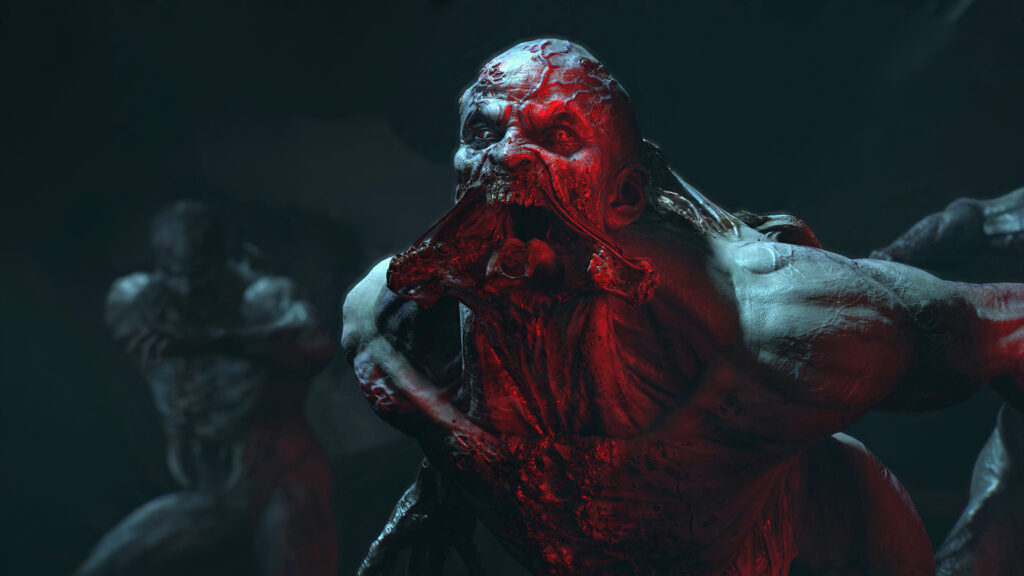As much as we talk about lighting in video games, especially with developments in ray-tracing and whatnot, darkness is as valuable a commodity as any other. Of course, the absence of sunlight is only one aspect that brings the night together – it’s also about the atmosphere. One minute, you could be boundlessly free, exploring streets that would ordinarily be filled with people, and the other, gazing into the boundless darkness, searching desperately for any sign of light.
Dying Light has always been interesting in that sense because its streets, regardless of the game, are teeming with the undead. And when night falls, they can morph into Night Walkers, becoming much faster and more aggressive. For how much we – and many others – refer to it as a first-person survival horror with parkour, the core concept is much more straightforward: Do what you have to do while there’s still light because once the sun goes down, things can and will go bump in the night.
Because that’s when the Volatiles, the strongest and most intelligent infected, come out to play, and they’ll relentlessly pursue you until you find shelter. While there are safehouses to spend the night and effectively bypass their horrors, you won’t always have that luxury. And sometimes, it pays to explore. With no human enemies about, there’s more time to claim air drops and every action that grants double XP. Unless you die, upon which XP is lost, depending on the difficulty (though it doesn’t apply to all skill trees).
With Dying Light 2’s emphasis on more decision-making, factions, consequences, and whatnot, the appeal of the night felt somewhat relegated to the side. Techland addressed this in the Good Night, Good Luck update by making Volatiles much more dangerous and allowing them to traverse rooftops alongside new color grading, more dynamic shadows from your flashlight, and even audio changes to de-emphasize the music in favor of sound. And that’s all well and good, but it feels like Dying Light: The Beast will go even further than before.
The Volatiles are the focus, once more, sporting improved locomotion and tighter pathfinding. What this means is that they’re much more effective at chasing you, and with more jump attacks, it’s much more difficult to predict what they’ll do next. Their jump physics have also been improved, and they’re less likely to retreat than before.
Perhaps the most terrifying thing is thinking that you’ve escaped in a vehicle only to see them jumping onto the hood, ready to attack. The only thing that could be worse is if another potentially jumps on the trunk as well. Either way, Volatiles have become much more adept at hunting together, making for an even more harrowing chase, and there are more variants than in previous titles.
But again, that’s only one aspect of what constitutes the night in Dying Light: The Beast. Since this is a horror game, Techland utilized the different biomes to ensure each area is a unique place to explore after sundown. When you’re sneaking through the Natural Reserve’s dense forests, it’s much more difficult to see, which means using the flashlight more often. However, this could also make it easier for the Volatiles to spot you. The sound design comes in especially handy here, because it allows for narrowing down an infected’s location just from their footsteps. Imagine the tension that ensues from carefully sneaking about, only to hear the shuffling of a Volatile, not knowing whether they’ve caught your scent or are still on the lookout.
Traversing the town areas may be somewhat easier since there are light sources. This makes it easier to spot ambient threats, but once again, if you’re not careful, they’ll spot you just as easily. Castor Woods is a smaller open world compared to Dying Light 2, but it is still quite dense. Maybe you’ll get away by parkouring across the buildings, relying on sheer mobility against most of the undead hordes. Beast Mode can especially come in handy, making it easier to access high ground or gain some speed on the chasing Volatiles. It may even allow Kyle Crane to survive for a bit longer against a full pack.
And really, that is the core appeal of Dying Light – the thrill of not getting caught, the terror at hearing the infect, the adrenaline from engaging in a chase, the risk of possibly dying and the catharsis of surviving. It’s easy enough to play the game as usual and simply take shelter, avoiding the night unless the story mandates it. The rewards are appealing, sure, but that’s only a small part of it.
While Dying Light: The Beast promises a large experience packed with side quests, secrets and collectables – their “most diverse world” yet, so to speak – I’m most interested in the amount of work that’s gone into making the night once again feel oppressive. Rather than this shift in lighting and the introduction of new enemy types that you want to exploit because it increases your experience, it seemingly comes across as a separate presence. It can serve as a hunting ground for the most terrible things in the world, whether you see them coming or not, or it can become a playground, where the player expertly outmaneuvers the Volatiles and other infected, almost like they’re more infused with the night than their adversaries.
In a way, it becomes less a matter of survival and more about mastering the darkness, especially because your strategies will change depending on the environment. The fact that the Volatiles, intelligent and adept at hunting as they are, have become even more potent only adds to the chaos and excitement of each encounter. Even the best laid plans can fall apart, and adapting, staying one step ahead, will prove just as intriguing as trying to survive. And while I know other open world titles are designed differently, the interweaving of day and night is a core part of The Beast experience.
Which is easy to overlook considering everything else, whether it’s the extensive playtime (that too for what’s essentially a standalone expansion), variety of biomes to explore, the over 100 weapons to wield (medieval swords and flamethrowers ahoy), and much more. I’m keen to reunite with Kyle Crane after all these years and see how the jaded yet hopeful survivor of Harran is holding up after being kept prisoner and experimented on by the Baron. Wherever his journey leads him, one thing is for sure: There won’t be any Last of Us Part 2-style mercy for the Baron.
Yet when you examine it all more closely, everything interconnects and harkens back to what made Dying Light so appealing in the first place. Kyle is effectively a beast, not unlike the Volatiles – how will that come into play? Will he become as ravenous as them or something far more (for better or worse)? With how dangerous the night is, how are the other survivors, especially those who have dealt with the Baron, getting along? Even if Kyle gets his revenge, will there really be any reprieve in this world where you have to coexist with the night as much as remain terrified of it?
There are plenty of questions, and thankfully, we won’t have to wait long to have them answered. Dying Light: The Beast launches on September 18th, a whole day earlier than planned, for Xbox Series X/S, PS5, and PC.
Note: The views expressed in this article are those of the author and do not necessarily represent the views of, and should not be attributed to, GamingBolt as an organization.






This post offers an intriguing perspective on how lighting can transform gameplay experiences. It’s fascinating to see how advancements like ray-tracing are shaping the way we interact with game environments. Looking forward to more insights on this topic!
I completely agree! The way lighting shapes atmosphere can really heighten tension and immersion, especially in horror games like Dying Light. It’s fascinating to see how advancements in technology can create more dynamic environments that keep players on their toes.
Absolutely! It’s fascinating how different lighting techniques can influence gameplay mechanics as well. For example, in Dying Light, the transition from day to night not only changes the visuals but also alters the player’s strategy, making every nighttime encounter feel more intense.
I completely agree! The way lighting can affect a player’s perception and strategy is often overlooked. In Dying Light, for instance, the contrast between light and shadow not only enhances the atmosphere but also adds layers to the survival experience, making players more cautious as night falls.
Absolutely, the impact of lighting goes beyond just aesthetics; it can significantly change how players navigate and engage with the environment. In Dying Light, the dynamic lighting creates a sense of urgency that heightens the thrill of nighttime encounters. It’s fascinating how these elements can transform gameplay experience!
You’re right! The way lighting influences gameplay can create a more immersive experience, especially in survival horror games like Dying Light. It not only sets the mood but also affects player strategy, making shadows and visibility critical elements in navigating the environment.
Absolutely! Immersive lighting can significantly enhance the atmosphere, making players feel more connected to the game world. It’s fascinating how different lighting techniques can also affect player strategies, especially in a game like Dying Light where nightfall brings unique challenges.
I completely agree! The way lighting affects player emotions and tension is fascinating. It’s interesting how different lighting techniques can also impact gameplay strategies, especially in a game like Dying Light where nightfall brings a whole new level of challenge.
You’re spot on about the emotional impact of lighting! It’s impressive how Dying Light uses shadows to create a sense of dread, especially at night. The contrast between light and dark not only enhances gameplay but also immerses players in the story.
Absolutely, the way Dying Light plays with shadows adds a layer of tension that enhances the gameplay experience. It not only affects visibility but also influences player strategy during nighttime encounters. The immersive atmosphere really keeps you on edge!
I completely agree! The dynamic lighting not only creates tension but also influences player strategies, forcing us to adapt our approach based on visibility. It’s fascinating how a well-designed environment can impact gameplay so significantly.
Absolutely! The way dynamic lighting shifts can really change a player’s approach to exploration and combat. It adds an extra layer of immersion, making the night feel truly alive and unpredictable.